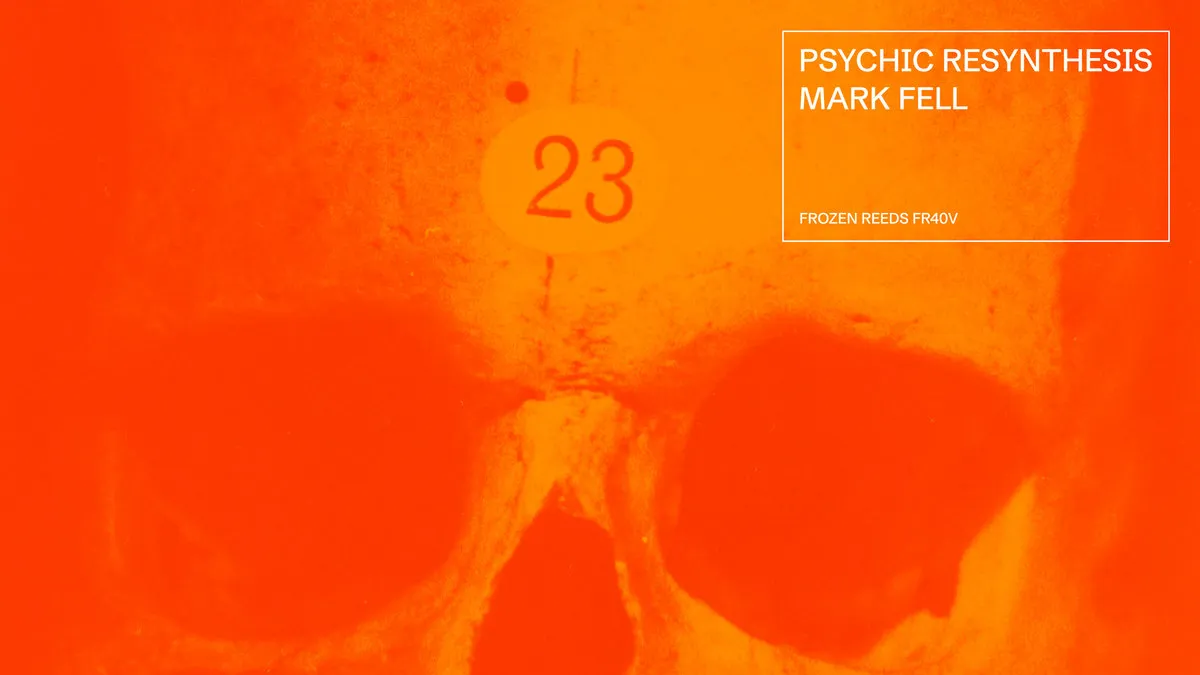Copyright Pitchfork

Mark Fell has spent much of his career building castles out of splinters. Or their digital equivalents, anyway: The Sheffield native’s music is an amalgamation of shards, fragments, and slivers of electronic sound sculpted into dazzling arrhythmic bursts. Composed on software platforms like Max/MSP, his pieces are rigorously formalist in nature, their shapes largely determined by the interaction of elements within closed systems. Even in the absence of understanding just what makes his music tick, one intuits the action of inscrutable processes at work, arcane rules generating sequences that unspool at the speed of black MIDI. To listen to Mark Fell often feels like standing in the shadow of the mathematical sublime. Still, while the effects may be bracing, titles like Periodic orbits of a dynamic system related to a knot suggest a cool-headed researcher in the background, his hands stuffed in lab-coat pockets while his machines whip themselves into a frenzy. As he recently told Tone Glow of his approach: “It’s less about the construction of emotion or meaning or storytelling and more about foregrounding the characteristics of the process and technology.” But Fell’s new album Psychic Resynthesis marks a major shift in his work: It was written for, and performed by, the players in Explore Ensemble, a London chamber group appearing here as a sextet for flute, clarinet, piano, violin, viola, and cello. This isn’t the first time he’s written for human musicians; his 2018 album Intra, for an ensemble of microtonal metallophones, was recorded by percussionists interpreting software-generated audio patterns, which they listened to on headphones while playing. But Psychic Resynthesis feels new for Fell: a recognizably “classical” piece whose tonal makeup echoes 20th-century composers like Morton Feldman and Giacinto Scelsi, and whose structure is rooted in Cagean chance operations. The piece opens with a held note on the cello that at first I mistook for the opening of Pablo Casals’ recording of the Bach cello suites. A scratchy violin figure drifts over the top; the violist tersely jabs away at a single string while the pianist repeats a series of softly dissonant tone clusters. As is often the case in Fell’s work, there’s as much silence as sound. Musical phrases drift like solitary clouds through an empty sky: plucks and scrapes, reedy bleats, strings that creak like rusty hinges, drones that sound like the air being let out of a balloon. Sounds and ideas come and go, triggering accidental collisions and incidental harmonies, but there is no apparent structure or logic. Nearly an hour and a half long, the piece feels less like a composition to be followed than a space to inhabit—a room to enter and occupy for a while, picking up random objects and setting them back down at your leisure, feeling neither uncomfortable nor completely at ease. The numerical titles of the album’s 10 tracks—things like “Combination #1 ( • | 6 | 4 | 3 | 2 | 6 )” and “Combination #4 ( 7 & 3 | 3 | 7 | 6 & 2 | 1 | 2 & 6 )”—once again seem to indicate that some serious number crunching is going on under the hood. That’s not entirely true, although few people not named Mark Fell are likely to decipher exactly what is happening on tape. Originally given the title Every non-empty ultra-connected compact space has a largest proper open subset, the original composition upon which this recording is based assigns seven “behaviors,” or sets of actions, to each player in the ensemble—a particular chord, say, or a sequence of notes, or a glissando along a string—for variable amounts of time. According to coded instructions assigned by the score, the players’ actions are designed to overlap in unpredictable and non-repeating ways. There are some other quirks, too: For one thing, performers are instructed not to rehearse together or even discuss their respective parts. And the durations of each action remain open-ended; as dictated by the score, one part might be as short as 10 minutes or as long as 10 hours—a daunting prospect, to say the least. For all the emphasis on process, it hasn’t been made very transparent for listeners of the album. (That I know this much is thanks to Fell’s explanations during a recent Bandcamp listening party for the album.) And Fell himself seems to have played fast and loose with the rules: Although Psychic Resynthesis is based on the original piece’s collection of assigned “behaviors,” Fell recorded each artist separately and, disregarding assigned durations, simply collaged together the results in a way that sounded good to him. It’s a relief that he’s not dogmatic about his systems. Rather than insisting on an hours-long endurance test, he seems willing to let listeners off the hook: We just get to sit back and enjoy this bizarre, not entirely intentional soundscape. And it is, truly, enjoyable. In its cryptic changes, tangled quasi-repetitions, and contrasts between the soft and the spiky, the piece has an odd effect. I find it impossible to listen to closely; invariably, my attention wanders. But get inside it, even for a spell, and you may feel like you’ve gone away for a while. Time dissolves; the conscious mind atomizes. Another new recording, Fell’s Nite Closures EP, offers an entirely different experience. It’s the first release on a fledgling label with a wonderfully stone-faced name—the National Centre for Mark Fell Studies—which the artist has said will be reserved for his solo electronic music, mostly in EP form. The record’s five tracks are more in keeping with the bewildering beat-based music of records like his Gábor Lázár collaboration The Neurobiology of Moral Decision Making, cobbling together deep-house pads and footwork syncopations into wildly lurching behemoths that seem to defy the very laws of physics, with balletic grace. “Nite Closures (extended dub)” begins with the glistening iridescent synths of Fell’s Sensate Focus era before contorting itself into a nine-minute barrage of seemingly non-repeating beats. “Nite Closures (version)” is even more frenetic, spinning Errorsmith-like rubber-band noises into a singeli-tempo maelstrom. The bulk of the record’s remaining tracks are nearly as disorienting; what I find particularly appealing are the strange, iridescent drones that hover in the background, glistening like oil slicks. Much like Autechre, Fell appears to be testing multiple limits at once: the speed of his beats, the possibilities of his tools, the ability of his listeners to make sense of what they’re hearing. Yet for all the obvious difficulty of his music, on a track like the shuddering “large modulos #3,” the beauty he conjures—awe-inspiring, breathtaking, incomprehensible—is undeniable.



